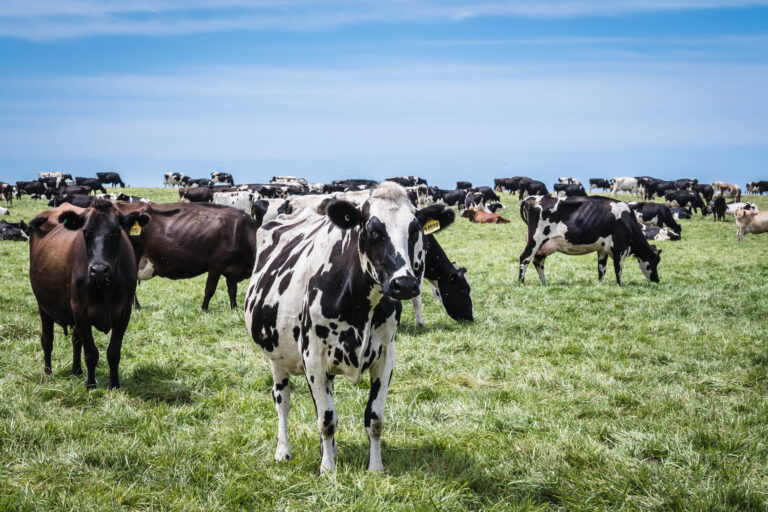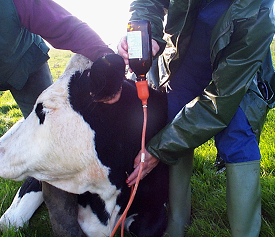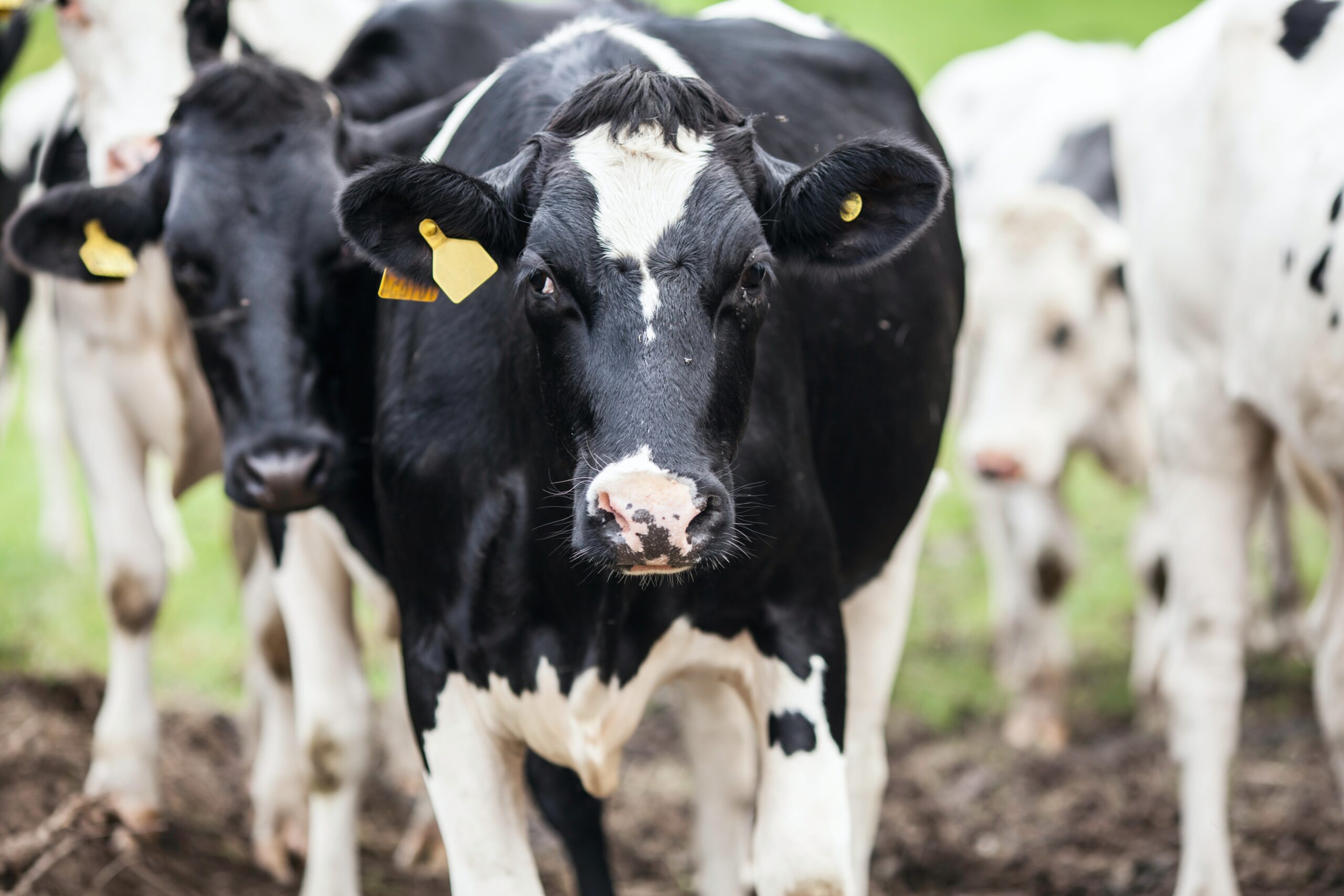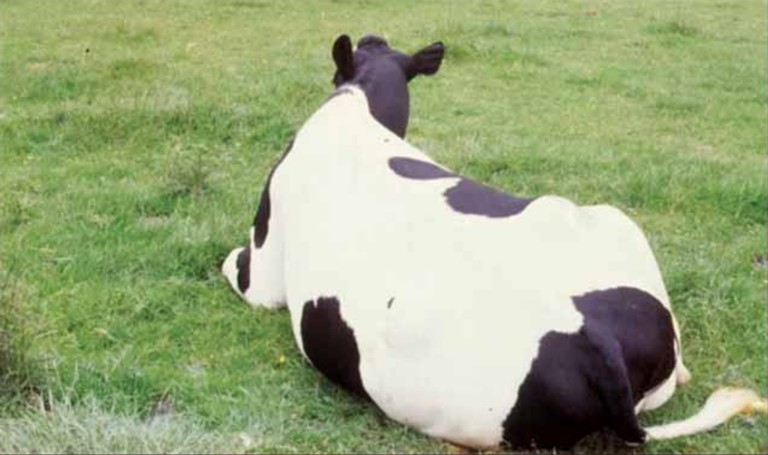What Is Milk Fever?
Milk fever, also known as hypocalcaemia or parturient paresis, is a common metabolic disorder that occurs in cattle, sheep, and goats. It is most common in dairy cows during the calving period but can also affect high milk production beef cows. About 80% of cases occur within one day of calving due to milk and colostrum production spiking, draining calcium (and other substances) from the blood, causing low blood calcium levels that are unable to be replaced. As calcium is critical for nerve and muscle function, this condition causes muscle weakness, paralysis, and other health complications and requires immediate treatment. Management of diet in the lead up to calving and during lactation is critical for Milk fever prevention.

What Are The Signs?
There are three stages during milk fever.
Stage 1: Cows are still standing however are beginning to show signs. Before a cow goes down, they will show some initial excitement or agitation and a tremor in the muscles of the head and limbs. They may appear restless, shuffle their feet and bellow. If calcium treatment is not administered during stage 1, cows will likely progress to stage 2, which is more severe.
Stage 2: A cow will go down, stop eating, have a dry muzzle, low body temperature and cold extremities. The cows heart rate will be elevated yet faint due to the heart muscles function being impaired by lack of calcium in the body. The stomach muscles of the cow will become paralysed which can lead to bloat, failure to defecate and inability to urinate. A cow will often tuck their head into their flank or have a distinctive S-shaped curve to the neck.
Stage 3: The cow will begin to lose consciousness progressively to the point of coma. The heart rate will rise rapidly and if left untreated at this stage, a cow may die within a few hours.
Causes & Risk Factors
Milk fever typically occurs around calving when a cow’s demand for calcium increases rapidly due to milk production, while the ability to absorb and regulate calcium is temporarily compromised.
Factors that contribute to the risk of milk fever include:
- Age: Older cows that have calved 5 or six times are more susceptible
- Breed: Jersey cows are more prone to milk fever than other breeds
- Weight/Condition Score: Fat cows are at a greater risk than thin cows. This is partly because their feed and calcium intake has been higher and partly because fat cows produce more milk at calving time
- Feed: High calcium intake prior to calving will reduce the cows efficiency of accessing calcium from their bones during lactation which puts them at risk of Milk Fever
Treatment
Depending on the stage the treatment will differ.
- Oral calcium supplementation for standing cows
- Intravenous calcium infusion for cows that are down
If a cow is still standing (Stage 1) then an oral supplement such as calcium chloride or calcium sulphate in a bolus (capsule) formulation will be rapidly absorbed into the bloodstream and poses little risk. Oral paste, gel, or liquid supplements of calcium are not recommended due to the greater risk of health complication when being administered.
Cows in stage 2 and 3 that are unable to stand will require immediate treatment through an injectable calcium and magnesium solutions. There are varying recommendations of dosage and percentages. One recommendation is injecting 300 ml, or more, of a 40% solution of calcium borogluconate or a combined mineral solution such as “three-in-one” or “four-in-one”. Often 600ml is required for a downed cow.

If treating the cow yourself, the solution should be injected in several places under the skin on the neck or behind the shoulder, unless the cow is in a coma. Injection into a vein should only be done by veterinarian as this carries the risk of sudden death if not done correctly. If the cow does not improve quickly after treatment, call your vet as other issues may be affect the cow.
Prevention
In the 3 weeks leading up to calving it is important to reduce calcium intake to less than 50g/day while feeding hay/dry matter and restricting access to green feed. This results in acidic blood which promotes the metabolic mechanisms of calcium mobilisation from the bone and improves calcium absorption from the intestines. Cows should be provided constant access to feed during calving. In early lactation, cows should receive as much calcium as possible and be put onto clover-dominant pasture. This will help to prevent grass tetany as well as milk fever.
Further Resources
- MLA – Milk Fever
- MSD Vet Manual – Parturient Paresis in Cows
- Lowline Cattle Association – Milk Fever Treatment and Prevention PDF
- Veterinary Handbook – Hypocalcaemia
- NADIS – Grass Staggers (Hypomagnesaemia)
Click here to download the PDF version.
For further information, please contact the VFF Stock Sense team on 1300 882 833 or by email [email protected]

